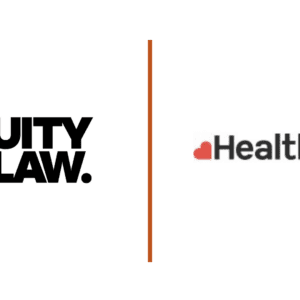HMRC on the Hunt – Preparing for CJRS Audit
Key contact: Claire Knowles
Author: Rebecca Mahon
The warnings came very early on that the coronavirus job retention scheme (or “furlough scheme”) would be open to abuse. Grants under the scheme were not means tested, there was no requirement to prove that you were in genuine need of support. Anyone could apply to receive 80% of their wage costs (capped at £2500 per month per employee) through the furlough scheme, as long as their employees were not working. But how would HMRC know if the employee was doing a bit of work from home on the side? Or making calls to clients/customers from their personal phones?
The “horror stories” are out there of people being told that they have to keep secretly working whilst on furlough or else lose their jobs. We believe that this represents a tiny minority of businesses and it is certainly not reflective of how any of our clients have approached the scheme. Even so, it begs the question as to whether due to the strain on HMRC resources as a result of administering such a huge scheme, these unscrupulous employers are likely to get away with it.
There are three principle ways in which we believe that HMRC will find out about fraudulent claims, namely:
- Confidential reports from employees or third parties. HMRC have a dedicated fraud reporting site, with a specific section on reporting fraudulent claims under the furlough scheme. This method is perhaps less effective for tackling fraud under the flexible furlough scheme (where an employee will not necessarily be aware of how many hours their employer has said that they worked/were furloughed).
- Random audits. HMRC have confirmed that they will be doing this over the next few months and years. However, this avenue is naturally limited by HMRC’s resources.
- Evidence of growth/financial health. HMRC will know if a business has increased revenue/profit over the last year, in spite of the coronavirus pandemic, when they submit their tax returns. If they have increased revenue/profits whilst claiming to be adversely affected by coronavirus and claiming under CJRS, that business was probably never eligible to use the scheme in the first place. One might imagine that HMRC will also see increased revenue/profits whilst claiming under CJRS as clear evidence that employees must have been working whilst furloughed.
So what will HMRC do if they suspect fraud?
HMRC already has powers to issue penalties and to even criminally prosecute individuals engaged in fraud. However, it has been reported that the Finance Bill (currently still in draft form) which will set out next year’s tax arrangements will introduce a new mechanism for HMRC to recover payments owed to it – the 100% tax levy. This is speculation only, but the suggestion is that HMRC will be able to add the tax charge to the tax bill of an employer whom they believe has (whether through fault or fraud) wrongly claimed under the furlough scheme. We expect of course that there will be mechanisms in place to appeal any charges in the case of genuine fault (which there may be some leniency on, given the complexity of the scheme and the Treasury’s delay in producing comprehensive guidance). However, if something like this is implemented, it would represent a “clean” way for HMRC to reclaim money that they are owed without having to accuse employers of fraud.
Next steps for employers
As above, we believe that very few employers are actively trying to defraud the scheme. Equally however, we don’t envisage that HMRC is necessarily looking to give employers the benefit of the doubt unless there is clear evidence to support the employer’s position that e.g. there was a genuine mistake. Employers accessing grants under the furlough scheme must keep careful records, including the agreement with the employee to be furloughed in the first place, for 5 years. If you cannot provide those records, then you can expect to be told that the money you accessed must now be repaid. Retrospectively creating or forging records will not work (not least because we expect that HMRC will analyse the metadata of any evidence you provide to establish when the document was created). However, it’s not too late to “get your house in order”, and that’s where we can help.
When assessing whether fraud has taken place, HMRC will likely focus on the following questions:
- Was the employer eligible to claim?
This element is unlikely to cause concern very often as proof of employer eligibility primarily derives from registration on HMRC’s real time information system for PAYE and other information available to HMRC. Additional eligibility criteria will apply to certain employers though such as publicly funded companies and companies in administration and things will be in inherently more complicated where a business has multiple PAYE schemes or there has been a transfer of a business undertaking. In situations like these, delays and miscommunications may prompt HMRC to review an employer’s eligibility and so, if there is any doubt, it is best to contact our employment team for bespoke advice.
- Was the employee eligible to be claimed for?
This question will be scrutinised far more strictly should HMRC come knocking as it relies on more situational evidence and could result in a business repaying the entirety of the value claimed for an ineligible employee. Among other eligibility criteria, HMRC will likely examine evidence of (1) whether the employee was actually employed and not on leave at the commencement of their furlough period; (2) whether there was a valid furlough agreement; and (3) whether the employee ceased all work during their leave.
Criteria (1) and (2) above can be evidenced by keeping clear records of the relevant contracts/ agreements. Acuity have helped clients with hundreds of furlough agreements over the past few months so do get in contact if you have concerns about the documented evidence of your existing of future arrangements. Criteria (3) will be more of a spectrum. HMRC will almost certainly conclude ‘fraud’ where an employee has continued to provide services that generate revenue for the business. However, it is unclear how they will approach situations where an employee has replied to clients’ emails out of courtesy, spent time handing over their duties, or recorded ‘non-chargeable’ time (for example during training or team meetings). We would not consider these examples to amount to fraud, however, HMRC could take a ‘black and white’ approach in the first instance and require businesses to prove the contrary. Keeping clear evidence of how furloughed employees spent their time, and that the business did not benefit/ consider this work at the time, will be invaluable should the business be audited a few years down the line.
- Was the claim necessary?
Government guidance and the HM Treasury directions have made it clear that the purpose of the Scheme is to protect employees of businesses facing financial difficulties as a result of the health, social and economic impact of Coronavirus in the UK. The necessity of a claim under the Scheme is incredibly subjective and so HMRC have largely avoided restricting access on this basis. However, as mentioned above, HMRC could use successful trading as prima facie evidence before investigating further. Though introducing a retrospective necessity test would be rather unjust, HMRC could seek to rely on the definition of ‘furloughed employee’ to pursue this line of argument. To be a furloughed employee the employee must be instructed to cease all work “by reason of circumstances arising as a result of coronavirus or coronavirus disease”. Justifying and documenting business decisions sooner rather than later will help protect the business for the long-term.
- Was the claim accurate?
This final question will also attract heavy scrutiny, especially for claims complicated by the flexible furlough scheme from 1 July. A spreadsheet clearly setting out claim calculations might be the best way to prove compliance with rules on usual hours and furlough hours. When it comes to evidencing that the working hours used in those calculations accurately reflect the time actually worked, timesheets, email data, revenue generated, and work completed could all be used as evidence. An audit could also involve interviews with furloughed employees so there should be a clear distinction between working time and furlough leave both in business records and the minds of employees.
Claim calculations will also sometimes depend on the business’ interpretation and application of the Scheme rules. For example, time spent training can be counted as either furlough leave or working hours depending on the nature of the training. Where a business is drawing conclusions such which affect their calculations it is helpful to justify and document the decision. Board minutes are a great way to evidence that the business considered the rules and came to a decision which it believed was appropriate, shifting any burden of proving the contrary back to HMRC.
Reasons to act now
- The rules are still in flux. Even HMRC have struggled to meet deadlines and produce clear guidance and there are still many legal and administrative questions to be answered. Confusion and delay may be excusable for now but, as time goes on and pressures ease, HMRC will become stricter and compliance failures will become less explainable.
- Being transparent with employees and demonstrating to them that you are complying with HMRC rules will reduce the likelihood of employee ‘tip-offs’ which, rightly or wrongly, may prompt an audit. Businesses can also use this opportunity to direct employees with concerns to a contact point within the business in the first instance, rather than HMRC.
- Employees and directors are still within the business’ control but may leave over the next five years. Should they be contacted in the future it will be too late to persuade them of the business’ good intentions or seek their cooperation.
- Evidence is easy to collate. Saving emails, agreements, calculations, and board minutes is easy while collating on the go while trying to find and organise these documents under the pressure of an audit will be time-consuming. Even if it no audit occurs, the next five years can be spent with peace of mind that your evidence is prepared and Acuity have answered all your questions.
- Creating evidence at some point in the future, rather than at his stage, would not be advisable. A thorough investigation would identify documents which have been forged or falsified, implying the business is trying to cover its tracks rather than accurately document the facts.
- HMRC may provide grace periods for owning up to mistakes and correcting behaviour. If not actual ‘grace periods’, they will certainly be more lenient where companies have their affairs in order before any anti-fraud measures are announced. As with all coronavirus responses so far, any deadlines imposed on anti-fraud measures will likely come into effect from the date of the announcement. Since there is no way of knowing when this date might be, it is important to be prepared. By the time the announcement is made, it may be too late.
For further support or guidance, please contact our employment and immigration team.
Claire Knowles – Partner
Mark Alaszewski – Associate
Rebecca Mahon – Solicitor
Adam McGlynn – Trainee Solicitor






